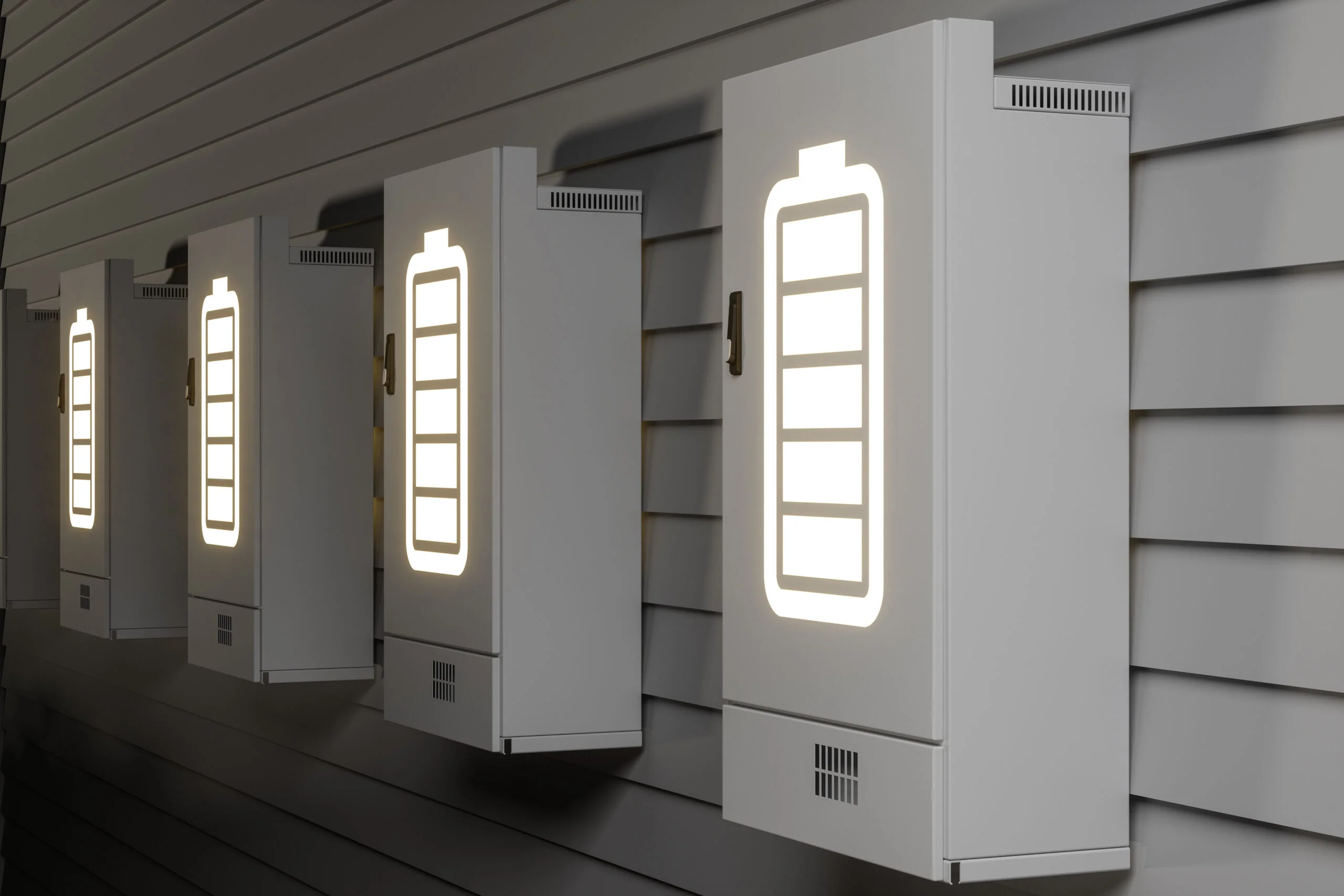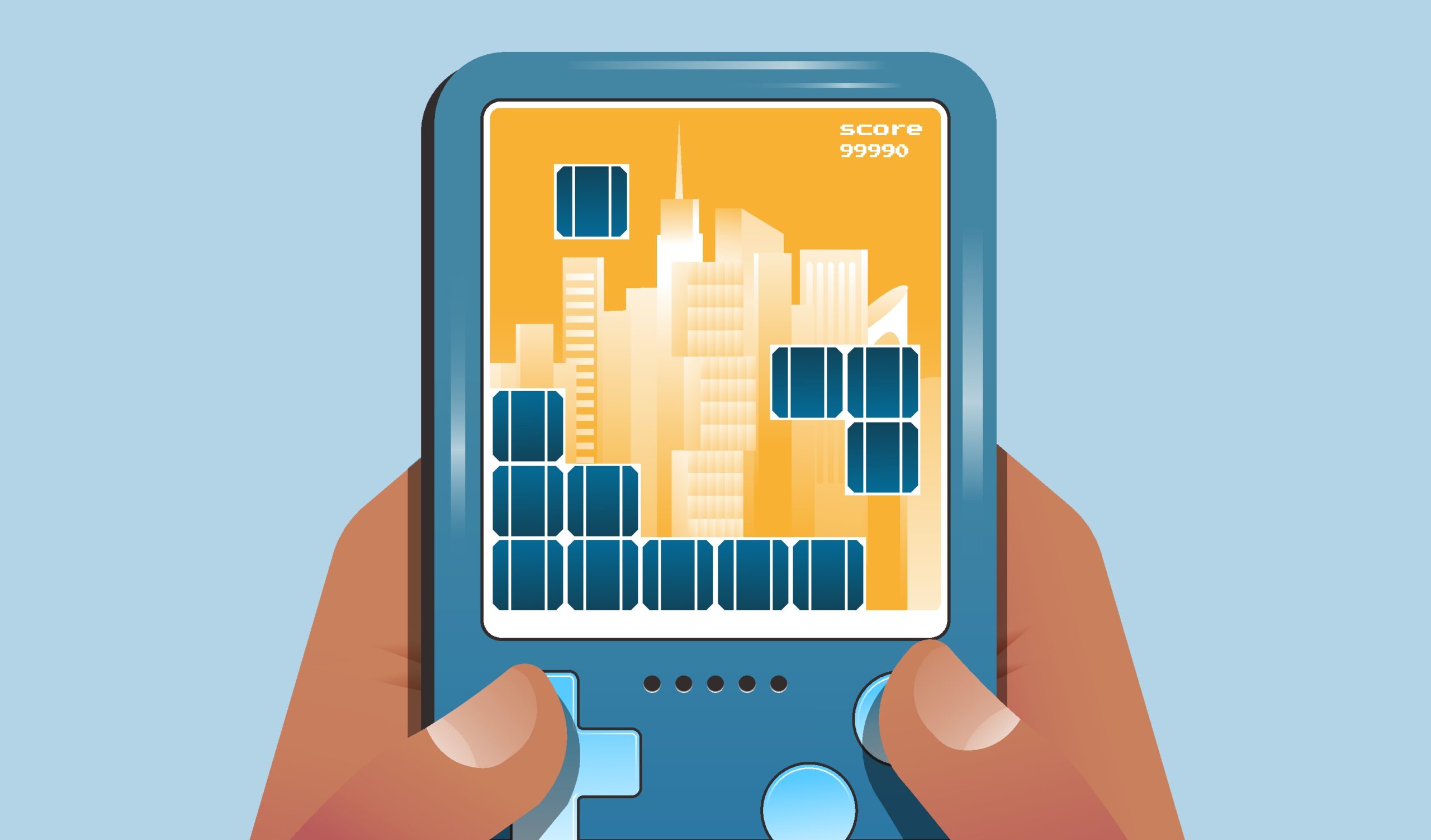Between increasing electricity needs and climate-related challenges, behind-the-meter (BTM) battery storage systems are more important than ever as an effective solution to enhance grid resiliency and defray high peak energy market costs. Consumer-owned BTM battery storage systems help utilities mitigate grid strain, prevent outages, and lower peak energy costs through concerted conservation efforts. These conservation efforts manifest as demand flexibility programs like demand response, EV managed charging, or BYOD programs. So how can battery storage increase grid resilience and energy security? Let’s take a look.
Understanding Behind-the-Meter Battery Storage
A BTM home battery storage is an energy storage system installed at a consumer’s property, either alongside solar panels or as standalone units. Unlike utility-scale batteries, these systems operate “behind the meter”—that is, on the consumer’s side of the electricity meter and allowing homes to store excess energy for later use. The major roles of BTM systems include:
- Peak Shaving: Storing energy during off-peak hours for use during peak times to minimize reliance on the grid.
- Load Shifting: Some advanced BTM systems feature intelligent load control and can independently manage specific high-power devices and schedule them to run during off-peak hours automatically.
- Demand Flexibility: Participating in utility programs like demand response to supply energy to the grid when needed.
- Energy Backup: Providing power during outages.
The Role of BTM Battery Storage in Grid Resiliency
Grid resiliency refers to the potential of the power grid to resist, absorb, and recover from extreme weather, equipment failures, and/or cyberattacks. BTM battery storage enhances this resilience in several ways:
Decentralized Energy Distribution
Large-scale disruption to traditional, centralized systems is highly possible. BTM storage decentralizes energy use by enabling the self-generation and storage of energy in residential locations. It reduces dependence on the long-distance transmission of energy, thus providing a reliable power source in local communities in case of emergency.
Demand Flexibility Programs
Utilities that implement demand flexibility programs can aggregate these battery storage systems from places like homes or businesses into a virtual power plant (VPP), and remotely dispatch stored energy from BTM batteries during peak demand periods, effectively balancing supply and demand without firing up expensive and dirty peaking power plants. These applications can:
- Reduce strain on the grid.
- Mitigate the likelihood of outages.
- Lower costs associated with purchasing peak energy.
Continuity of Service During Outages
BTM battery storage provides an important lifeline during blackouts, as homeowners can employ their self-generated stored energy to maintain continuous power output for essential appliances. This proves particularly helpful to areas frequently impacted by severe climate occurrences that might foster abrupt, sometimes longer-than-usual, power loss. For example, as a decentralized resource, battery storage units have proven useful during the increased hurricane events that saw thousands without power in the fall of 2024.
Integration with Renewable Energy
Batteries and storage units are integral to the energy transition, which led to exponential capacity growth in 2024 and thousands of new jobs. Most BTM systems are installed with solar panels, which can harness and store renewable energy. When it’s cloudy or nighttime, solar energy stored in batteries can be used for power, reducing reliance on the grid. This enhances grid resiliency and supports the transition to a sustainable energy future.
Real-World Applications and Success Stories
Utilities and communities have already started the deployment of BTM battery storage to make the grid more resilient. Let’s take a look at a few examples:
- California’s Flex Alert Program: During temperature extremes, the state’s grid called on residents with BTM systems to reduce energy usage and export stored energy onto the grid. The cumulative effect of this helped prevent blackouts.
- Hurricane-Prone Regions: BTM battery storage systems help keep essential appliances running during prolonged power outages, especially in those areas prone to hurricanes, such as Florida. This extends the role of these systems to one of the effective solutions for storm preparedness.
Benefits for Consumers
Energy Independence
Behind-the-meter battery storage empowers consumers to reduce their dependency on the grid by storing energy produced in community locations, such as from solar panels. Greater independence will come because of more personal control over individual energy usage and being less vulnerable when there is an outage or disruption to the grid. In an emergency, homeowners may depend on pre-stored energy to ensure that their necessary devices and appliances continue to work without interference.
Savings From Reduced Bills
Energy saved during off-demand times can be used during peak hours, saving dollars on energy bills. BTM pairing systems with renewable energy resources such as solar panels minimizes power consumption and lowers overall energy costs over time, consequently promoting savings passed on to the consumer. Furthermore, BTM battery systems also maximize the utilization of your solar power, capturing excess energy that would otherwise be wasted and enabling higher ROI on solar investments.
Earn Additional Financial Benefits through Energy Export Programs
Sometimes, BTM battery storage systems may provide more capacity than needed for homeowners. In this instance, homeowners may participate in energy export programs that allow them to earn additional credits or revenue by participating in energy buy-back programs such as the Net Billing Tariff (NBT) program in California, or the Smart Renewable Energy Export program offered at Hawaiin Electric, to name a few.
Resilience
BTM battery storage acts as a source of backup power during any outage, not only for customers but for the community at large. For example, utilities can aggregate excess stored battery energy for use in a virtual power plant, shifting ambient battery energy to where and when it’s needed most. For customers, this not only provides a lifeline during outages but helps the community to recover that much faster, all while providing incentives to participants.
Benefits for Utilities
Peak Demand Management
Utilities often face huge challenges during periods of peak demand, which often results in deploying dirty and expensive peaker plants, or costly energy market purchases. BTM battery storage allows utilities to manage peak loads more efficiently by drawing on power from distributed energy sources (DERs), which they can aggregate through a Grid-Edge distributed energy resource management system (DERMS) to shift load through demand flexibility programs. Doing so decreases energy market spending, and defrays the incredibly high costs of infrastructure upgrades while maintaining continuity of service.
Improved Grid Stability
Some utilities rely heavily on renewable energy sources to generate electricity, which may affect grid stability due to fluctuating energy supply. BTM battery systems act as a buffer and help balance these variations by storing excess energy during high-generation periods and releasing it during periods of high demand. This capability increases the reliability and efficiency of the grid while supporting higher penetration of renewable energy sources.
Challenges & Future Outlook
Despite the advantages of BTM battery storage, there are many challenges facing its widespread market adoption. This includes:
- High Initial Costs: Generally speaking, battery systems can be an expensive addition for the consumer.
- Interoperability Issues: Development in the technology is required for complete integration with already existing grid infrastructure.
- Policy and Regulation: Accompanying supportive policies and regulatory frameworks has to support the scaling of adoption.
Going forward, further advances in whole-home battery backup technology along with favorable policies will continue to drive BTM storage growth. As costs come down and awareness increases, more and more consumers and utilities will appreciate the value of the systems in enhancing grid resiliency.
How Behind-the-Meter (BTM) Battery Storage Enhances Grid Resiliency Conclusion
Behind-the-meter battery storage is revolutionizing energy management and innovators like FranklinWH empower consumers and utilities to improve grid resiliency. Since BTM systems enable decentralized energy distribution, facilitate demand flexibility programs, and make the most use of renewable solar energy, they provide an opportunity for utilities to leverage the demand flexibility potential unique to battery storage systems, while minimizing on-demand grid pressure. In doing so, BTM battery systems decrease the potential for outages and defray usage during peak periods of consumption, which further supports the clean energy transition. As the energy landscape evolves, BTM battery storage will increasingly become instrumental in building a resilient, efficient, and reliable power grid.





